At A Glance

HWAN YEONG HAM-NI-DA!
The following information have been carefully selected for your reference. Some resources may have bias perspectives. Please approach the SMU Libraries (library@smu.edu.sg ) should you have any doubts or need clarifications.
These videos show the distinct cultures, belief, values, and norms of South Korea.
Local Culture
-
Overall Cultural Life in South KoreaFind out more about the cultural life in South Korea.
-
Religions and Beliefs in South KoreaFind out more about the various religions in South Korea.
-
Percentage of Religions in South KoreaFind out the percentage of each religion in South Korea.
-
Ethnic Groups in South KoreaFind out more about the ethnic groups in South Korea.
-
Percentage of Ethnic Groups in South KoreaFind out the percentage of ethnic groups in South Korea.
-
Spoken LanguagesMany South Koreans speak English, as nearly all those under the age of 40 will have had English lessons at school. There is a large Chinese community in South Korea, so in some areas you may well hear Mandarin or Cantonese spoken.
-
South Korea Events & FestivalsFind out interesting local festive celebrations and events throughout the calendar year in South Korea.
Popular Sports
Football (Soccer), Basketball, Baseball, Basketball, Golf and Rugby
Traditional Sports
Tae Kwon Do - a self defense discipline that originated in Korea.
Jokgu - a Korean sport which resembles a mix of football and volleyball.
Ssireum - a folk wrestling style and traditional national sport of Korea, with the aim to bring any part of the opponent's body above the knee to the ground.
The video explore the evolution of food on the Korean dining table - reflecting it's past and present for Koreans from all walks of life.
The e-sports culture is strong in South Korea. Find out more in this video.
Delicacies
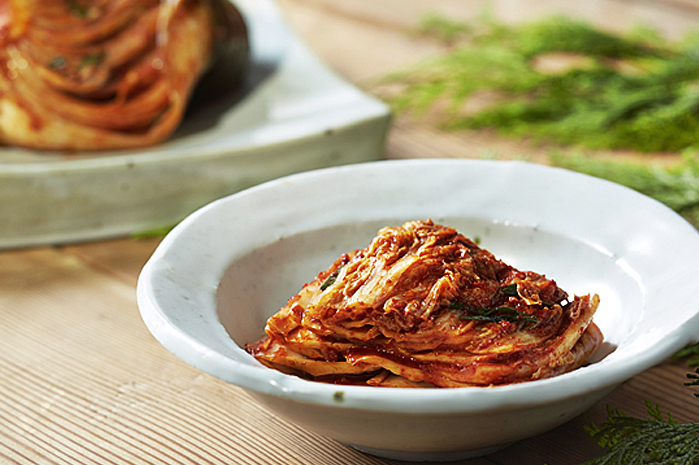
Baechu Kimchi
The most popular kimchi enjoyed by most Koreans, it is made with a whole salted cabbage (uncut) mixed with hot pepper powder, garlic, fish sauce and other spices, which is then left for fermenting. This particular kimchi varies by region, with the southern part of the country known for its saltier, spicier, and juicier flavors.
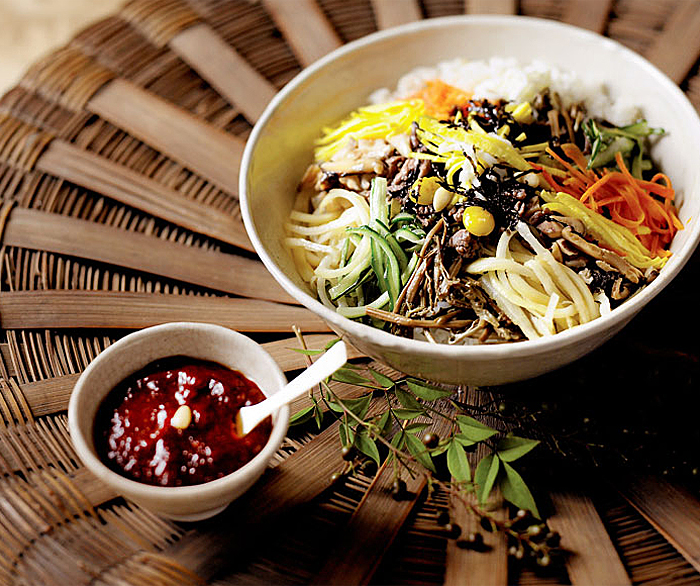
Bibimbap
Bibimbap, a bowl of rice mixed with meat and assorted vegetables, is one of the all time favorite meals of the Korean people, regardless of age or generation. Its popularity has also grown internationally with the spread of hallyu, or Korean “wave.”
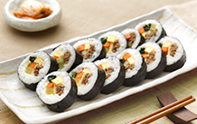
Gimbap
Gimbap is steamed rice that is covered with laver with different ingredients inside. Rice can be seasoned simply with salt or a mixed seasoning of vinegar, sugar and salt. The rice is then placed on a sheet of laver. Strips of eggs, eomuk, carrot, seasoned spinach and pickled radish are then placed in the middle to be rolled together into a cylinder shape. The roll is then cut into bite-sized pieces. The taste can be quite versatile, depending on the ingredients.
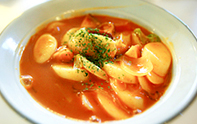
Tteokbokki
Tteokbokki, along with gimbap and eomuk, is one of the most common bunsik sold by street vendors. Rice powder is steamed and made into a long cylinder-shaped rice cake called garaetteok. This rice cake is cut into finger size pieces and cooked in a spicy yet sweet red pepper sauce called gochujang.
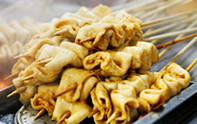
Eomuk
Eomuk is also referred to as odaeng. Eomuk’s main ingredient consists of ground fish meat. It is usually skewered and boiled in radish and green onion broth. Eomuk is especially popular as a winter snack. Some variants also contain sausage, cheese or rice cakes.
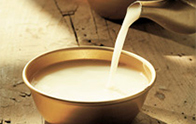
Makgeolli
Makgeolli has the longest history. It is made by mixing steamed glutinous rice or wheat with nuruk, a traditional fermentation starter, and water, then leaving the mixture to ferment. It has a milky, opaque color and a low alcohol content of 6%-13%. It is relatively low in calories and high in proteins. It also contains high levels of yeast and lactobacillus.

Soju
Soju is the most popular liquor in Korea. The most common type is diluted soju, which is mass-produced by mixing water with spirits, a process different from the traditional method. While all have the same soju base, locally produced alcohols are generally made using the traditional method of distillation and regarded as high quality products.
Videos
The video showcases the traditional culture of Korea.
Find out more about the Korean working culture in this video.

